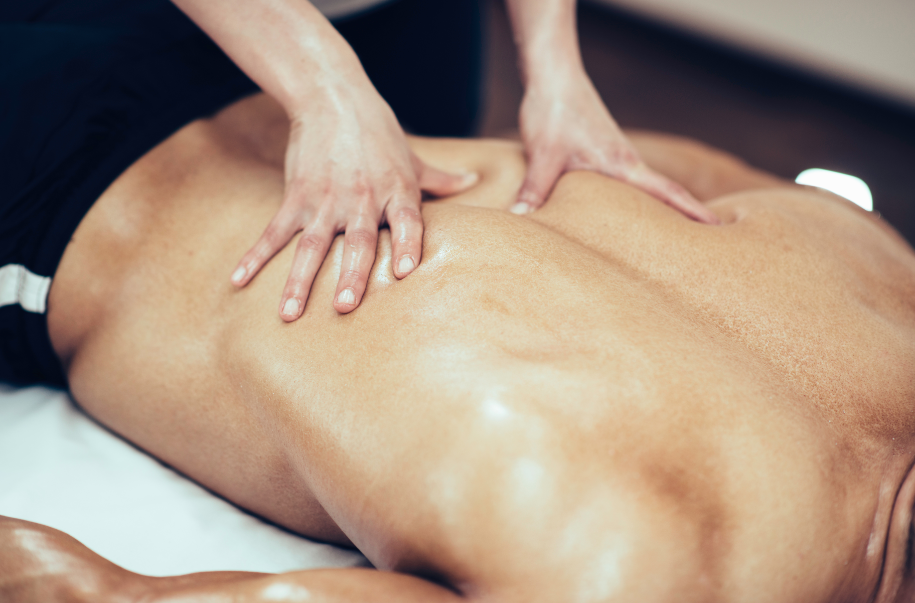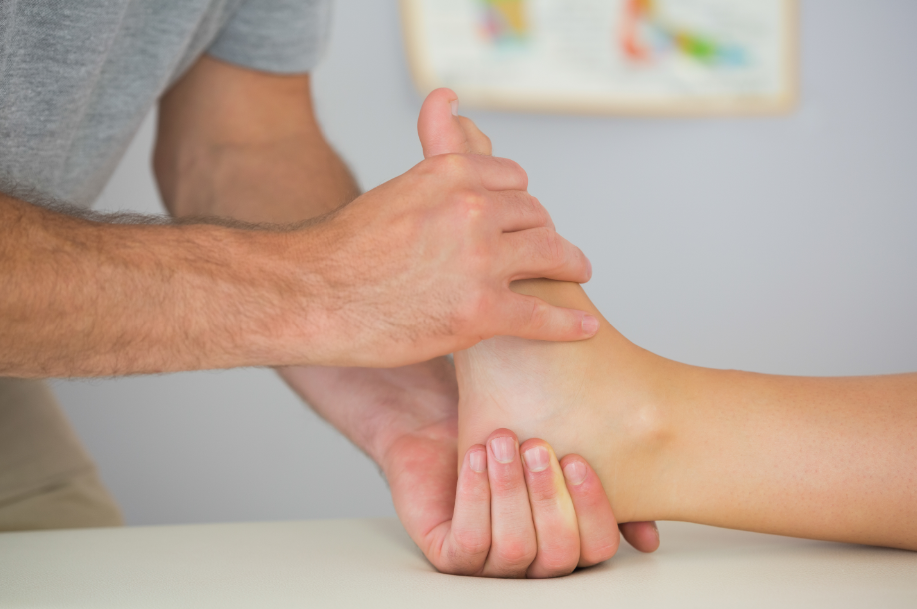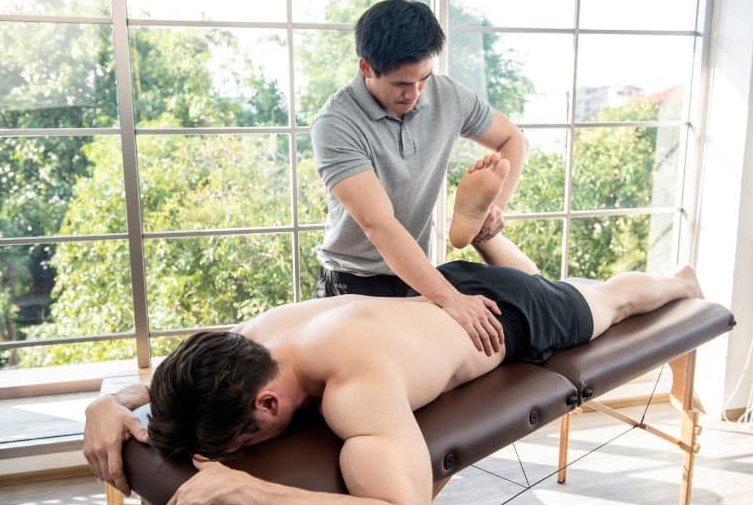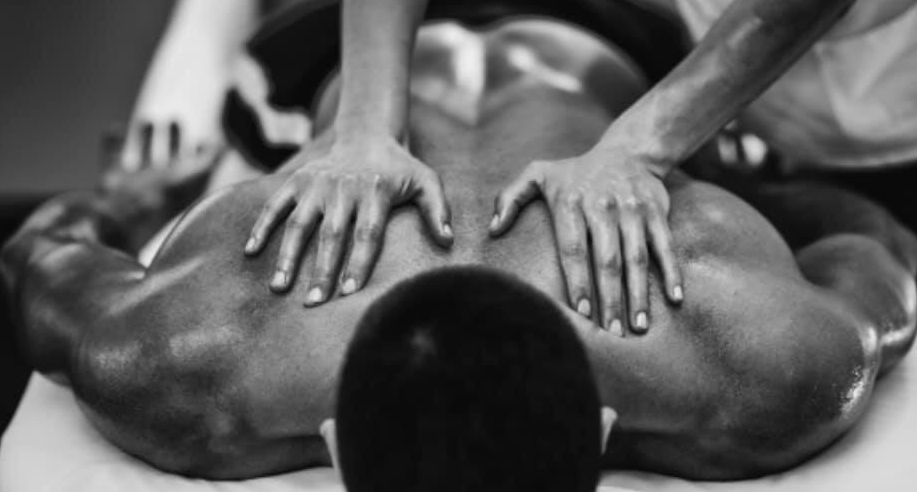Manual Therapy - Hand's Up for "Hand's On!"
By Malcolm | 2nd April 2019 |

Manual Therapy - The Case For "Hand's On"
The use of manual therapy has become a very contentious and fiercely debated topic within the therapy world. Once the staple of every teaching syllabus, and a mainstream treatment for many, recent years have seen a division between therapists as the evidence supporting previously proposed mechanisms of effect is challenged, and a more biopsychosocial approach is advocated.
Almost daily on social media you can witness a Brexit style “leave or remain” battle between those advocating against its use, suggesting a more "hand's off", active intervention approach and those who still feel a "hand's-on" approach is appropriate.
Here at SportsInjuryFix.com we believe that context is key. Manual therapy can play a useful part of a global and holistic treatment regime, particularly within the sports injury world. As with all treatment modalities, it is the narrative that supports the modality and its application with sound clinical reasoning that is crucial to its success. Likewise, we understand the thoughts and reasoning behind those who advocate that it may not be the most appropriate treatment in other clinical environments or populations.
Recently a very balanced and considered comment was written on a Facebook post that presented a passionate and reasoned case for the use of manual therapy, particularly within a sporting population. We asked the author Kate Stalker to expand her thoughts and turn them into a blog. Kate is a UK based South African trained Physio who previously worked in professional cricket for both Derbyshire CCC and the NZ Black Caps. She now runsThe Derbyshire Sporting Joint, a Physiotherapy clinic based in Derby that specialises in the prevention and treatment of sports injury.

So, a couple of weeks ago I had a slightly gin fuelled rant about why I still use manual therapy on a Facebook physio group. It caused a bit of a stir… I’m not sure if that’s because people liked my Saturday night drinking and sharing, or if they just liked the fact, I was speaking up for what a lot of people still believe in… I think/ hope it was a bit of both!
Because a lot of us do use manual therapy very successfully. As PART of treatment. As a TOOL for getting people moving better and with less pain so they can get back to what they love to do sooner. I have a master’s degree in Manual Therapy, and one of our two subjects was ‘Rehabilitation’. That’s it, good old-fashioned exercises to use in combination with our manual therapy.
None of us using manual therapy think that it works in isolation (or let me rephrase that, none of us SHOULD think it does). It can’t! I know if all I do is manual therapy with a patient, they will most probably leave my room feeling much better. But if they don’t do anything to increase their strength/ stability in the period of time before seeing me again, then whatever gains have occurred will not exist in more than a week’s time.

Maybe in an NHS setting there isn’t time to touch patients (although I see so many patients who end up having surgeries they didn’t need as they never had quality hands on physio combined with rehab, I sort of feel it’s a false economy). Bravo to you if you can give somebody back their ROM of their cervical spine in one session without manual therapy when they walk in and have minimal rotation. I can’t and I’ve tried (but maybe that’s because I lack experience in exercise only therapy?) I need to use joint mobilisation techniques. Do I think I’ve changed the structure of muscle or fascia by my manual therapy? Uh no. Do I think I stimulated a neurophysiological change? Absolutely. You can feel the difference in the tension of the muscle/ tendon/ joint, and so can the patient.
So, if manual therapy doesn’t work, then how come I very occasionally make people significantly worse if I’ve been too aggressive or used the wrong technique? (I’m a human after all!). If manual therapy did nothing, then I’m confused as to how I make people worse. And better obviously!!
If we are looking at outcomes at 12 weeks, I think a patient who has manual therapy has a slight improvement pain wise to those who just had exercises. However, I know those 12 weeks were less painful for the manual therapy group, and the exercises were more easily performed by the patient, and that their pain journey was definitely different. I think this could assist patients not getting into centralised pain as they’ve not suffered as long or as much.
Have you ever had horrendous back pain with associated leg pain? You’d cut your leg off if someone told you the pain would stop!! That’s something to think about for all those who talk about maladaptive pain patterns with back pain patients etc. What if the patient had less pain for the three months while they were doing their rehab exercises as they received manual therapy in conjunction with their treatment? I haven’t done the research. But I did like this article that the BMJ recently published… A little food for thought?

In a sports physio role, either in private practice or in a team environment I don’t think that a hand's-off approach can ever work. When an athlete has to compete three days after an injury, I think it’s highly unlikely that a few careful rehab exercises are going to get them through. I worked full time in international cricket for three years and a large majority of that time I felt like an ambulance at the bottom of a very steep hill.
We travelled full time (ten months of the year) with an excellent strength and conditioning coach, so by no means were the players short of one to one conditioning/ rehab/ or even prehab. I would happily throw the kitchen sink at someone if it helped them be in less pain, with more movement so they could play, and play well (difficult hitting a ball over the boundary when your arm feels like it’s about to drop off).
The most serious injuries were always sent straight home for surgery/ physio/ rehab, but the mild to moderate injured players were kept on tour. And in those circumstances, manual therapy made a massive difference. Yes there were players dependent on manual therapy (and I’d work hard to do only what was needed with them so as to change that, with lots of education, reassurance etc), but there were those that would avoid me like the plague unless desperate, and would do everything they could to do only their exercises instead of getting near my Ninja Fingers.
But when push came to shove and they were in agony and needing to play, we got them through with some manual therapy and some basic exercises. If you are treating someone who trains within an inch of their lives in professional sport, can you really get away with NO manual therapy? I’ve never met a team that you could do that with, certainly not without getting a massive ‘lazy’ label attached to you.

So, if so many people use manual therapy and believe in it, why don’t RCTs show that manual therapy is beneficial? Because how can you standardise treatment? How on earth can you standardise humans!!. The many factors that affect patient outcomes that are seldom taken into account in a RCT: Mood, home life, love life, activity levels, type of activity patient does most, weather (find a patient with chronic joint pain who doesn’t tell you atmospheric pressure changes impacts their joint pain), diet, weight, season etc etc.
No RCT will ever show manual therapy to be effective on its own for treatment because that’s not how it should be used. And no one treatment should be applied to everyone. I have no standard treatment. That’s what good clinical reasoning does. And no one rehab should be applied to everyone. What the hell did we do all this studying for to dish out recipes onto every patient?
So how on earth can you do an RCT on a particular manual therapy technique only and then say it doesn’t work. Of course, it bloody doesn’t. Good sound clinical reasoning, resulting in a specific treatment plan, delivered with emotional intelligence and constant updating of rehab ideas is the only way it will work. Try designing a study like that though!!
There is so much talk these days on social media that manual therapy is utter BS. It breaks my heart that there is a whole new generation of physios coming through who think that using manual therapy to treat patients is some kind of evil admission. If you use manual therapy then don’t lie to patients that you’re changing anything in their bodies and if you tell anyone they have an upslip of their SIJ then back to the anatomy hall for you it is to try and move one of those things. They are stuck like glue!!!
If manual therapy works for you AS PART OF your treatment, and you are getting patients moving more, missing less days of work or training, motivating them to achieve more, then I say crack on and don’t let the bastards grind you down.
To become a member of SportsInjuryFix.com, please sign up and simply create a profile. If you are already a member, remember to join our new Facebook group - SportsInjuryFix Therapist Network - a group for member therapists to share and discuss knowledge and ideas.
